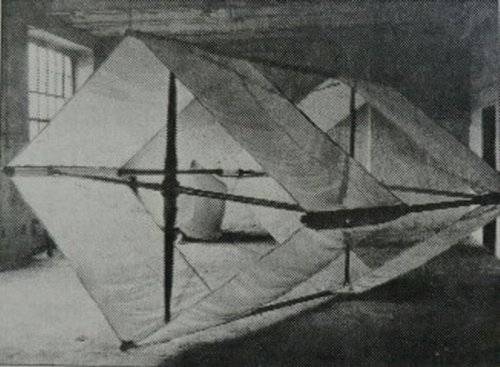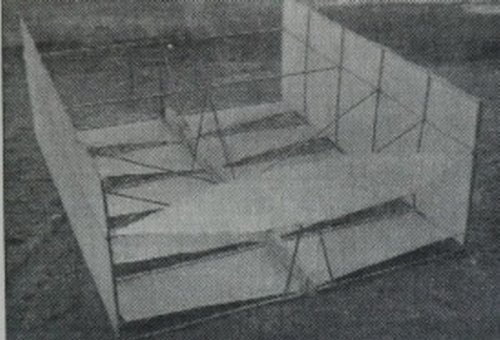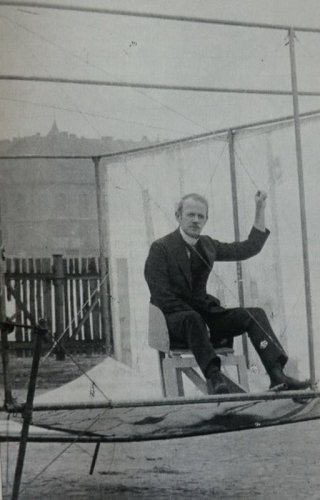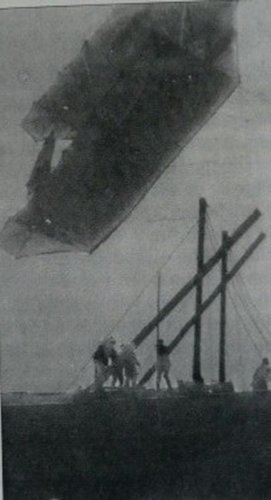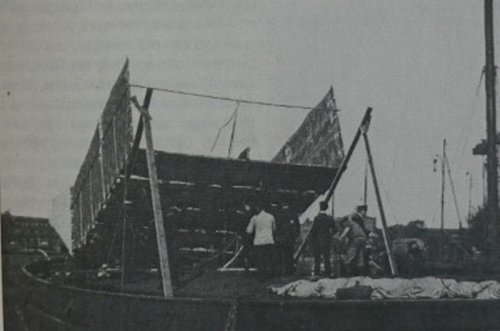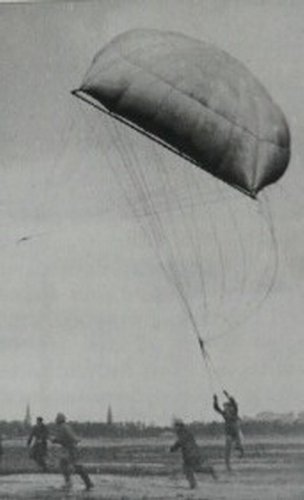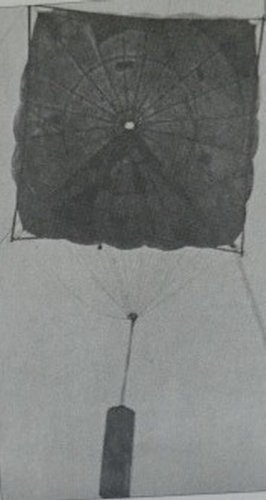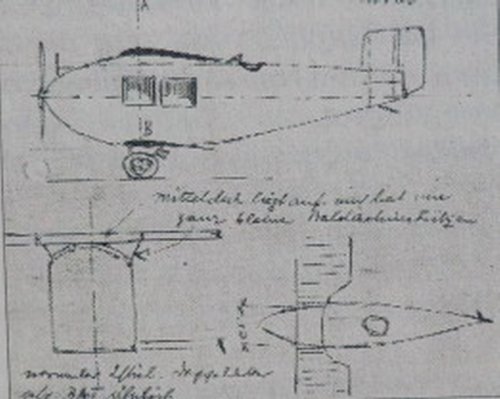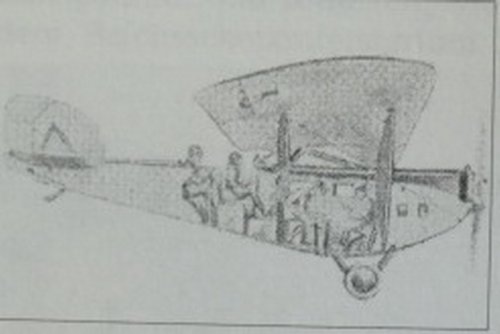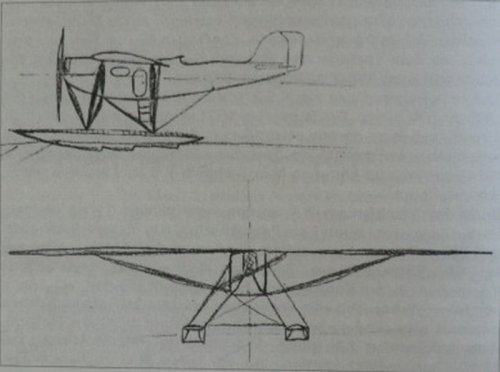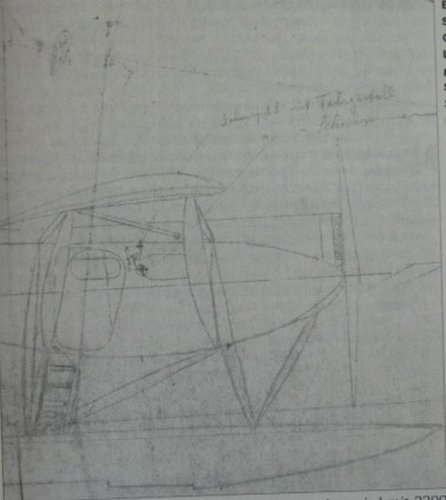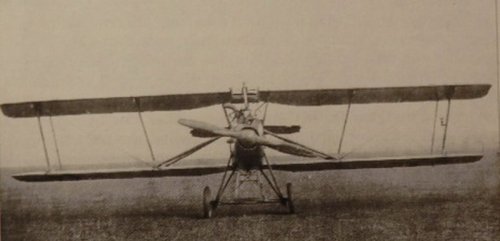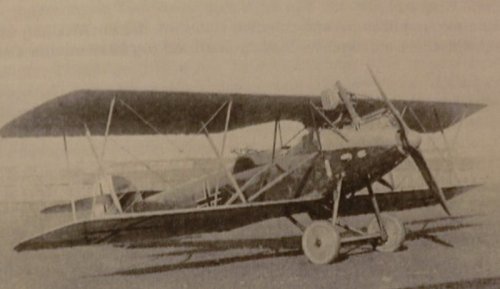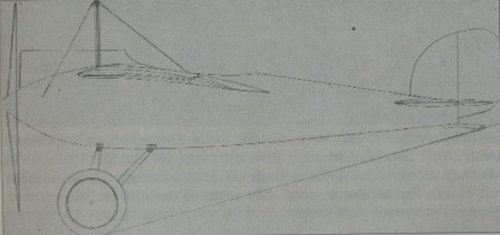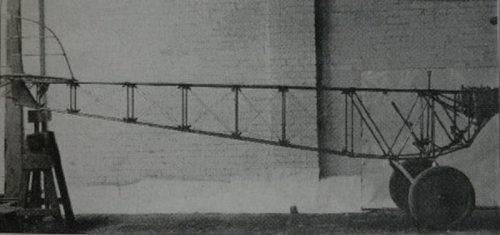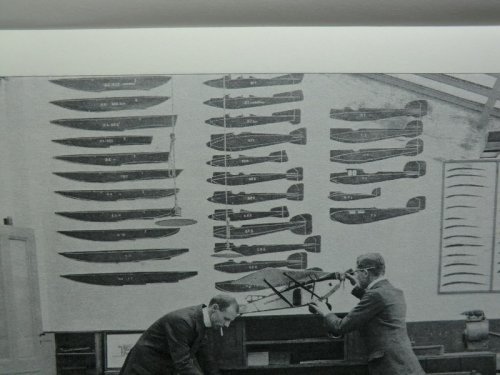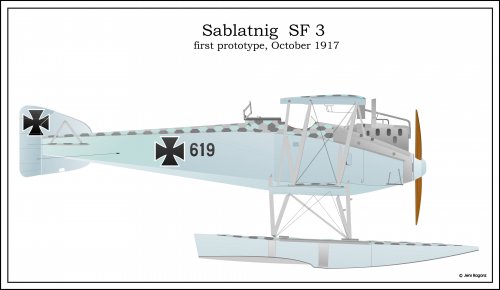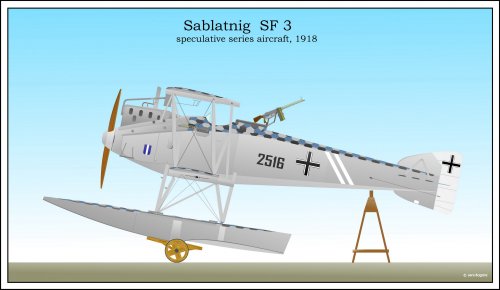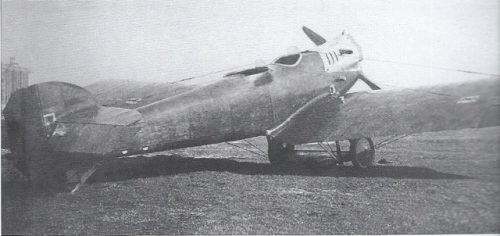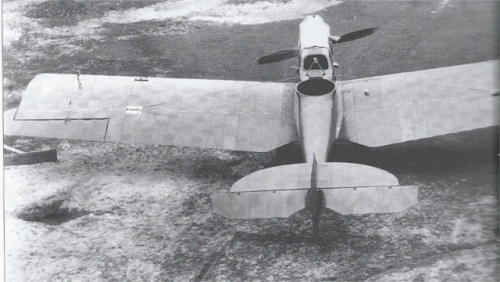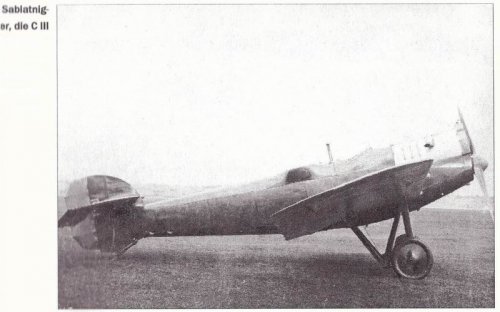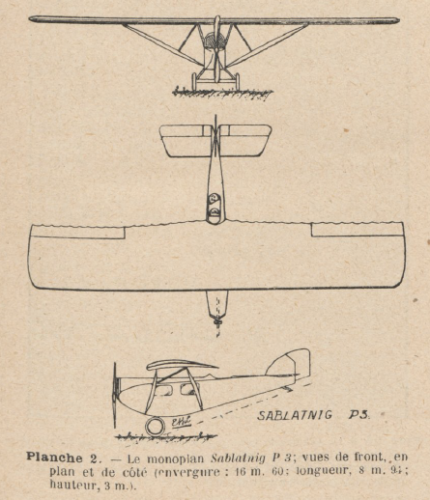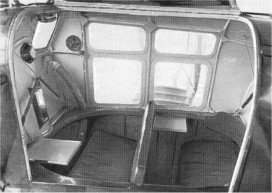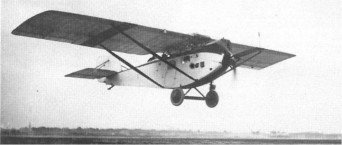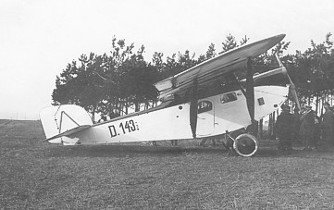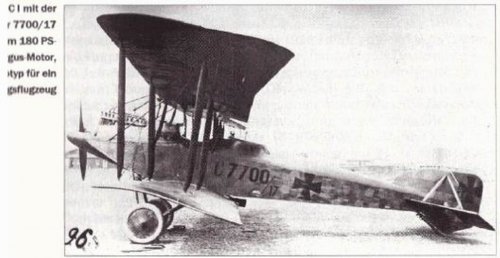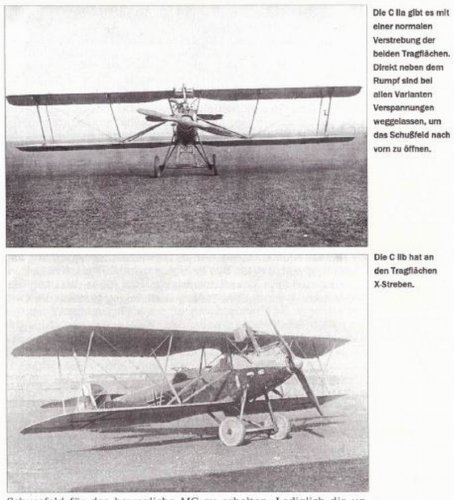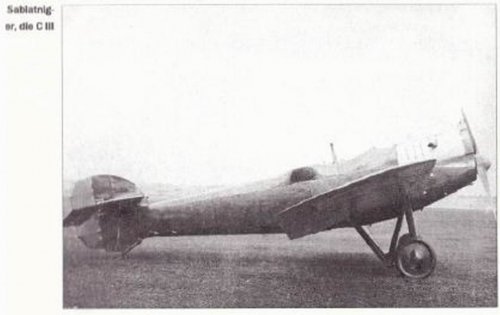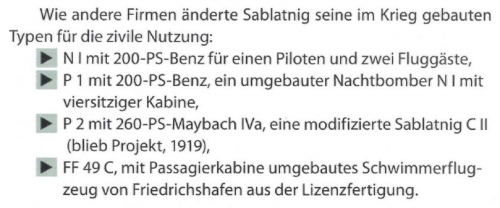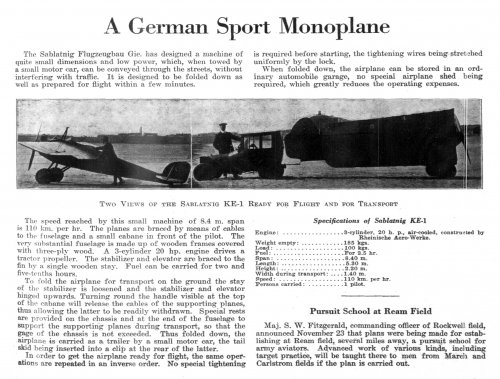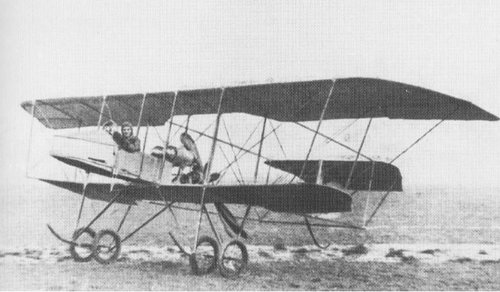- Joined
- 11 March 2006
- Messages
- 8,608
- Reaction score
- 3,061
The German Navy issued a request in 1918 for a man carrying kite to be used by Uboats for
Reconnaissance purposes, just as the Focke Achgelis Fa 330 Bachstelze during WW II. The
Sablatnig Flugzeugbau GmbH answered with the construction of a rhombical box kite,
carrying a gondola for an observer underneath (kite_01.jpg). The project proved to be
unexpectedly difficult. The kite of 40 sqm area needed a lot of wind to be kept aloft, not
helped by the drag of the gondola and its crab like attachement. After tests, during October
1918 a new design was stipulated, with aluminium replacing the wooden structure. On 2nd
of February a complete kite with a metal frame was delivered and tested, but the project
was then stopped. In 1921, when construction of aircraft still was forbidden, Sablatnig started
designing of man carrying kits again. The new idea was to design it in a way, that allowed a
gliding descent after release of the tow rope, as experience had shown the danger for the
observer using conventional kites, as a breakage of the tow rope inevitably meant a crash of
the kite. After a lot of “model tests” an example with 4m x 5m was successfully tested with
the chief designer Hans Seehase as “testpilot” in October 1921 (kite_02 and 03.jpg). An even
larger kite (5,5 m x 7m) was the next step (kite_04 and 05.jpg). Remaining problems were the
tendency of those kites to swing heavily, nevertheless towed by a car a height with “passenger”
of around 10 m was reached. Other experiments were made with so-called “kite parachutes”,
manned and unmanned, during 1923 and negotiations conducted with Mitsubishi, but without
results, so work was cancelled in 1924.
Photos and information from “Josef Sablatnig – Der Sablatnig Flugzeugbau und sein
Chefkonstrukteur Hans Seehase”
Reconnaissance purposes, just as the Focke Achgelis Fa 330 Bachstelze during WW II. The
Sablatnig Flugzeugbau GmbH answered with the construction of a rhombical box kite,
carrying a gondola for an observer underneath (kite_01.jpg). The project proved to be
unexpectedly difficult. The kite of 40 sqm area needed a lot of wind to be kept aloft, not
helped by the drag of the gondola and its crab like attachement. After tests, during October
1918 a new design was stipulated, with aluminium replacing the wooden structure. On 2nd
of February a complete kite with a metal frame was delivered and tested, but the project
was then stopped. In 1921, when construction of aircraft still was forbidden, Sablatnig started
designing of man carrying kits again. The new idea was to design it in a way, that allowed a
gliding descent after release of the tow rope, as experience had shown the danger for the
observer using conventional kites, as a breakage of the tow rope inevitably meant a crash of
the kite. After a lot of “model tests” an example with 4m x 5m was successfully tested with
the chief designer Hans Seehase as “testpilot” in October 1921 (kite_02 and 03.jpg). An even
larger kite (5,5 m x 7m) was the next step (kite_04 and 05.jpg). Remaining problems were the
tendency of those kites to swing heavily, nevertheless towed by a car a height with “passenger”
of around 10 m was reached. Other experiments were made with so-called “kite parachutes”,
manned and unmanned, during 1923 and negotiations conducted with Mitsubishi, but without
results, so work was cancelled in 1924.
Photos and information from “Josef Sablatnig – Der Sablatnig Flugzeugbau und sein
Chefkonstrukteur Hans Seehase”

